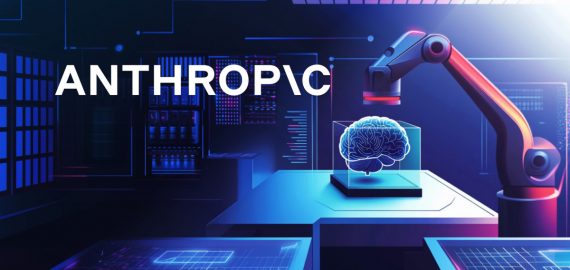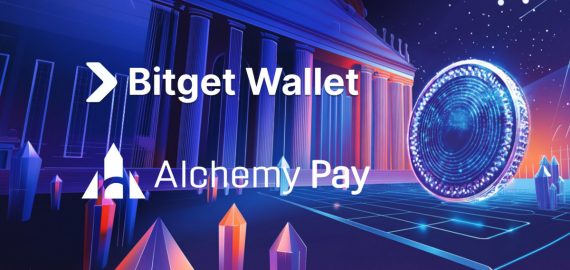How Flow is Enhancing Blockchain Scalability and User Experience With Its New Crescendo Upgrade


In Brief
Antoni Palazzolo, Marketing Manager at Flow, discusses blockchain developments, Web3 journey, innovative approach, and vision for decentralized applications and interoperability in the blockchain ecosystem.

In this interview, we sat down with Antoni Palazzolo, Marketing Manager at Flow, to explore the developments in blockchain. Antoni shares his journey in the Web3 space and offers a deep dive into Flow’s innovative approach to solving the blockchain trilemma. With the upcoming Crescendo update on the horizon, Antoni provides valuable insights into Flow’s vision for the future of decentralized applications and interoperability in the blockchain ecosystem.
Can you share your journey to Web3? How did you start, and what was your first project?
I started working in tech and innovation about ten years ago with a product studio. We worked with major marketing agencies in Europe, creating products for big brands like Nike, Coca-Cola, LVMH, and others. I also launched some products on Flow. Because Flow is going to have a significant update called Crescendo in the coming months, I was really happy to join the team as a marketing member.
Can you explain how you plan to leverage the Crescendo update to enhance Flow’s position in the blockchain ecosystem?
The Crescendo upgrade is the most important update for Flow. To give some background, the Flow team originally launched CryptoKitties years ago, which was one of the first consumer products built on Ethereum. During a couple of months, we saturated the whole network because there were thousands of users, and the network wasn’t ready.
Our chief architect officer also created the ERC-721 standard, now known as NFT, which is used by major collections like Bored Apes. Because we faced many challenges on Ethereum at that time, we decided to launch our own L1 blockchain to fix the blockchain trilemma and increase scalability.
We created our own programming language called Cadence, which is a resource-oriented language. With Cadence, we built the Flow blockchain network with a unique multi-node architecture that enables us to scale while maintaining network decentralization.
When we launched Flow, Dapper Labs also launched projects like NBA Top Shot and NFL All Day. Ticketmaster is now using the Flow blockchain, and Disney has launched their own collectibles on Flow.
Crescendo is the result of all these developments. We’ve built amazing features at the protocol level, originally written in Cadence and only accessible through Cadence. Now, we’re opening these features to the EVM community by creating an EVM zone on Flow. This means any developer using Solidity can copy-paste their code and deploy it with zero code changes on Flow, instantly increasing the speed of their app and drastically reducing transaction costs.
Developers can also enhance their Solidity smart contracts with Cadence to extend functionality, such as delegating transaction costs to someone other than the user. This potentially allows any EVM app to become faster and free to use for end-users.
You mentioned that you’re addressing the blockchain trilemma with the Flow. Can you explain in detail how Flow is solving this?
We’re solving the blockchain trilemma thanks to our multi-role architecture. The blockchain trilemma is about how to scale, stay decentralized, and keep the network secure. We address this with our unique architecture.
Unlike Ethereum’s monolithic architecture with only one type of node doing everything (data ingestion, consensus, execution, and state storage), we have five types of nodes on Flow, each allocated different tasks:
- Collection nodes: bandwidth-optimized and divided into cooperating clusters, managing the transaction pool and collecting well-formed transactions.
- Consensus nodes: forming and proposing blocks, validating collection hashes, and finalizing transactions through voting.
- Execution nodes: executing transactions, maintaining execution state, and responding to state queries.
- Verification nodes: verifying that all data is correct (we only need one, but have several for security).
- Access nodes: allowing developers to query information on-chain, acting as an API.
This architecture allows us to scale without compromising security or decentralization.
How do you see the state of interoperability on the blockchain?
Interoperability is a crucial topic. For blockchain to succeed, we need to ensure the whole ecosystem is interoperable. Otherwise, it will segment and fractionalize actors and liquidity. The current issue with rollups and L2s is that they fractionalize different ecosystems and aren’t truly interoperable.
We believe you shouldn’t need to deploy your own L2 to run your application. You should be able to run your application directly on an L1, but to do that, you need an L1 like Flow that is scalable, fast, and has transaction costs adapted to consumers.
That’s why we’re proud to open the EVM zone directly on the Flow network, allowing anyone to build on Flow even with Solidity and improving interoperability across chains.
How do you support developers who want to migrate their projects to a different blockchain platform? Do you have any support programs or resources available for them?
We have an active developer community on GitHub where anyone can collaborate. Developers can also join our Discord, where we have monthly open office hours. They can ask developer relationship managers questions or chat directly with product leads.
In the future, we’re looking to open a comprehensive developer program to improve online collaboration. The idea is to allow developers to find, comment on, and fork smart contracts on Flow or contribute to them. We want to enhance collaborative work between developers and invite them to build important primitives that will be used by other developers in the future.
Do you have any plans for your future roadmap, such as implementing new solutions or services, collaborating with other chains or protocols, or introducing new upgrades beyond Crescendo?
We have several exciting features coming with Crescendo and Cadence 1.0, our new programming language version. Some key features include:
- Scripted transactions: enabling multiple actions in one transaction.
- Multi-authorization transactions: allowing “all or nothing” transactions with set goals and automatic reversion if not achieved.
- Multi-phase transactions: adding pre- and post-conditions for increased security.
- Wrapping EVM transactions in Cadence: allowing bundling of multiple EVM transactions within a single Cadence transaction.
How do you envision the integration of AI and machine learning technologies with blockchain? Does Flow Network plan to incorporate them?
This is a tricky question because many people and brands are using AI as a buzzword with blockchain technology. The reality is that blockchain technology currently performs simple operations, and running an AI model on-chain is not technically possible right now for any existing chain or research project.
That said, I believe AI creates some existential risks for the internet and society, but it will also be even more impactful than the Internet itself. Blockchain can be an amazing tool to channel AI innovation.
While we may not be able to run AI models directly on-chain in the near future, blockchain can help increase the value of distributed systems on the internet. AI is currently centralizing much of the internet’s value inside models, and content creators struggle to capture the value of their creations.
I think blockchain’s value lies in how it can help share the value of content on the internet and channel AI innovation to reduce existential risks through smart contracts and automated agreements. In the future, there might be a framework for AI agents built on blockchain technology.
Disclaimer
In line with the Trust Project guidelines, please note that the information provided on this page is not intended to be and should not be interpreted as legal, tax, investment, financial, or any other form of advice. It is important to only invest what you can afford to lose and to seek independent financial advice if you have any doubts. For further information, we suggest referring to the terms and conditions as well as the help and support pages provided by the issuer or advertiser. MetaversePost is committed to accurate, unbiased reporting, but market conditions are subject to change without notice.
About The Author
Victoria is a writer on a variety of technology topics including Web3.0, AI and cryptocurrencies. Her extensive experience allows her to write insightful articles for the wider audience.
More articles

Victoria is a writer on a variety of technology topics including Web3.0, AI and cryptocurrencies. Her extensive experience allows her to write insightful articles for the wider audience.

















































